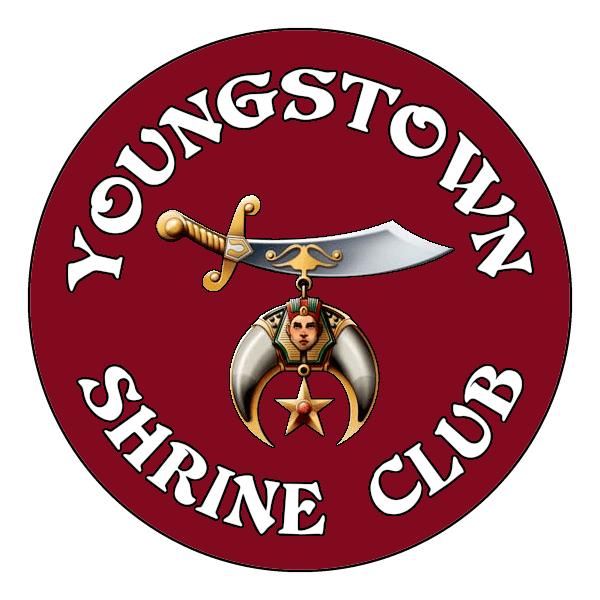History
Beginnings
In 1870 a group of Masons frequently gathered for lunch at the Knickerbocker Cottage on Sixth Avenue in New York City. At a special table on the second floor, a particularly fun-loving group of men met regularly. Among the regulars were Walter M. Fleming, M.D., and William J. “Billy” Florence, an actor. The group frequently talked about starting a new fraternity for Masons – one centered on fun and fellowship, more than ritual. Fleming and Florence took this idea seriously enough to do something about it.
Walter Fleming, M.D., and William “Billy” Florence
Billy Florence had been on tour in France and had been invited to a party given by an Arabian diplomat. The Arabian-themed party's exotic style, flavors, and music inspired him to suggest this as a theme for the new fraternity. Walter Fleming, a devoted fraternity brother, built on Fleming’s ideas and used his knowledge of fraternal ritual to transform the Arabian theme into the Ancient Arabic Order of the Nobles of the Mystic Shrine (A.A.O.N.M.S.).
With the help of the Knickerbocker Cottage regulars, Fleming drafted the ritual, designed the emblem and costumes, formulated a salutation, and declared that members would wear the red fez.
The first meeting of Mecca Shriners, the first temple (chapter) established in the United States, was held on September 26, 1872. As word got out about the fledgling organization, membership grew rapidly, spreading across the U.S. In the early 1900s, membership spread into Canada, Mexico, and Panama. Today, Shriners International is a fraternity with nearly 200 temples in several countries, thousands of clubs around the world, and hundreds of thousands of members dedicated to the principles of brotherly love, relief, and truth.
The Fez
The fez is one of the most recognizable symbols of Shriners International and was adopted as the Shriners’ official headgear in 1872. Named after the city of Fez, Morocco, the hat represented the Arabian theme the fraternity was founded on. It also serves as an outward symbol of one’s membership in the fraternity. Much like the white apron worn by Masons as a symbol of their brotherhood, the fez is worn only by Shriners as a symbol of their membership in this unique fraternity.
MWB Harry S. Truman,
Member of Ararat Shrine
Past Grand Master of Missouri
33rd United States President
Today the fez is worn at Shriners’ functions, in parades, and at outings to gain exposure for the fraternity. Members customize their fez to show their allegiance to their temple. Look closely at a fez, and you will also learn other important information about its wearer, such as membership in Shrine clubs, special roles within the organization, and much more. Each fez is custom-made, and a Shriner may own more than one fez depending on his activities and memberships.
The Emblem
The emblem on the front of the fez, the crescent and scimitar, is an integral part of the fraternity’s theme and represents the characteristics the Shriners embody.
The scimitar stands for the backbone of the fraternity; its members.
The two claws are for the Shriners fraternity and its philanthropy.
The sphinx stands for the governing body of the Shriners.
The five-pointed star represents the thousands of children helped by philanthropy each year.
The emblem also bears the phrase “Robur et Furor,” which means “Strength and Fury.”
Fun with a purpose
Shriner’s band units and other clubs perform at parades, picnics, and other events.
During the early part of the 20th century, membership in Shriners International grew at a steady pace. By 1946, membership had jumped to 150,000 Nobles, and another 250,000 had joined by 1958. Shriners International experienced one of its largest periods of growth in the years following World War II as returning soldiers looked for new ways to continue the camaraderie they had experienced with their fellow soldiers.
As the number of temples and nobles grew, so too did the hospitals. By 1958 the hospital’s endowment was valued at $125 million and growing. The nobles were proving themselves to be excellent fundraisers. The Shrine Circus, founded in 1906 for fun and entertainment, began to play a role as a significant fundraiser in support of the hospitals.
Today, there are nearly 200 temples across North America, South America, Europe, and Southeast Asia. In addition to the Shrine Circus, temples hold events throughout the year ranging from fish fries to concerts; car shows to fishing tournaments. It is fun with a purpose – supporting the important mission of Shriners Hospitals for Children®.
Cleveland’s Al Koran Temple
Al Koran Temple is the fourth oldest temple, with a charter dating back to 1877. Al Koran was founded in 1877 by Samuel Briggs. He and Brenton D. Babcock were made Nobles by William J. Florence, founder of the Shrine of North America, on October 21, 1876.


